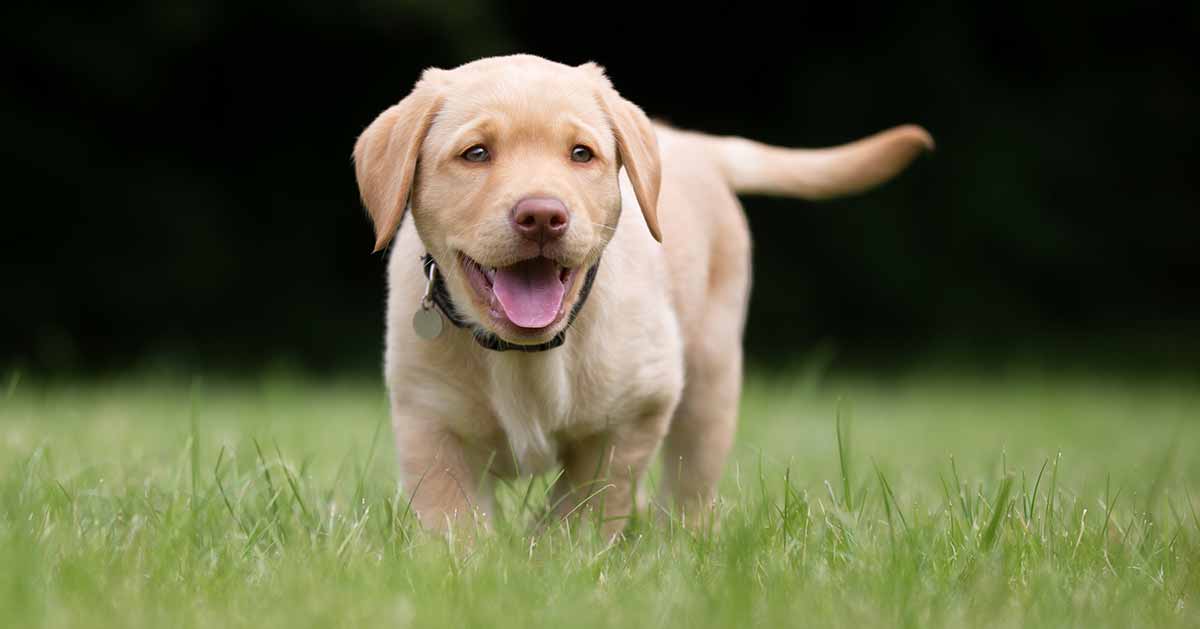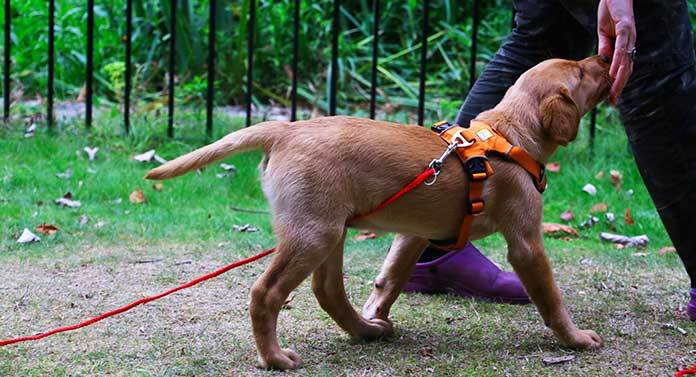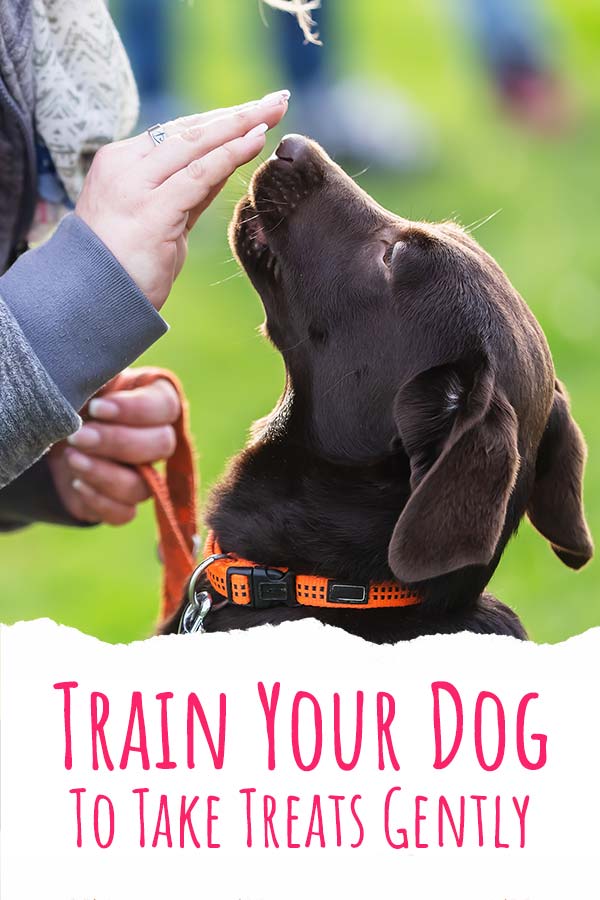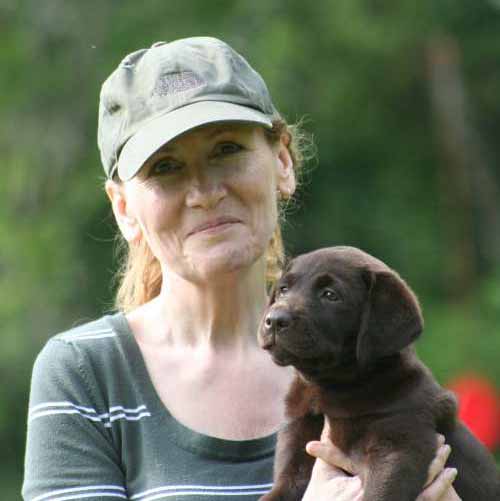 Finding out how to train your dog to take treats gently is a total game changer.
Finding out how to train your dog to take treats gently is a total game changer.
Everything about modern dog training is focussed on rewards. These are usually food based and often given directly to your dog’s mouth.
Which is wonderful if your dog is fairly gentle when they take them, but some dogs just aren’t.
These dogs nip so hard at your fingers that it really stings when you offer something tasty to them.
A rather unrewarding experience for the handler, and off-putting when trying to train.
But you can teach a dog how to take treat gently, using the method I’ll outline here.
How to train your dog to take treats gently
Training with treats is the present and future of dog training. It works so well.
Which makes it incredibly frustrating when every time you give your dog a small piece of kibble, you worry you are going to lose a finger at the same time.
Fortunately, you can improve this snatching by refusing to hand over the treat until they take it gently.

To crack this bad habit you will need a lot of treats.
Cut up into pieces that are big enough to hold between your thumb and finger, but small enough that your dog can’t get them without you letting go.
Pieces of small kibble work well, as do tiny squares of cheese or sausage.
Setting the scene
Snatching and being too rough when picking up food can be exacerbated if your dog is over excited or worried that they aren’t going to get the treat.
Wait until your dog is calm, and if possible do it not too long after a meal so they aren’t starving hungry.
Go into a familiar part of the house, say the kitchen, and sit down and appear to relax.
Pop a bowl of treats within easy reach on the table, and make sure that anyone else who lives in the house knows not to come in for the next ten minutes.
The waiting game
This is a grit-your-teeth sort of training exercise, unlike most of those we share with you.
For this to work you need to be stubborn. Or at least, more stubborn than your dog!
Sitting on your chair, pick a single treat out of the pot and hold it firmly between your thumb and finger.
It should be obvious the treat is there, but your dog should not be able to grab it without you letting go.
Offer him the treat.
He will try to bite down and gnaw it out of your hand, but don’t let him.
Hang onto that treat until you can only feel his lips going for it, not his teeth.
As soon as you can’t feel teeth, release the treat into his mouth.
Repeat!
Every dog is different
Some dogs catch onto this really quickly, others take a little longer.
Stick to short sessions, no more than ten treats each time.
Wait at least an hour between sessions, and only repeat when he’s relaxed and not already excited.
Adding distractions
Once your dog can comfortably take treats in a relaxed setting, you might like to try adding distractions.
Just another member of the family or different location to begin with.
But it’s worth helping them to appreciate that the rules of being gentle still apply, even when things are more exciting.
Keep it up!
Once your dog is taking treats more gently, it’s important that you don’t slip back.
Your dog will occasionally try to take treats more roughly and on these occasions you’ll need to grit your teeth and not let go!
If they do return to being rough, a few sessions repeating the above should put things back on track.
But what if the problem is so bad that it makes using this technique unbearably uncomfortable?
Dogs that bite hard
If your dog is a very hard biter, then this technique is more challenging.
You have a couple of choices on how to proceed:
- Wear protective gloves
- Don’t feed directly to their mouth
Protective gloves
If your dog is breaking the skin or causing bruising when they take treats, then this technique can be literally painful.
To carry it out you will want to begin teaching with gloves on.
Gardening gloves are fine, but they are usually quite bulky.
This is great for protection, but not so great for dexterity or feeling.
It can be tricky to hold a small enough piece of kibble without dropping it, which could reward your dog for biting even more.
It makes it a little trickier to know when your dog is getting it right, as you can’t feel their teeth against your fingers or when they aren’t there any more.
Thin leather gloves, like driving gloves are a good compromise as they take the edge off the bite without as many of the downsides.
But, they don’t give as much protection if your dog is very hard mouthed.
A change in tactics
Some dogs are not naturally gentle when they take treats.
They are excited to have them, and they don’t understand that in their enthusiasm they are hurting you.
Even high pitched yelps of pain either go unnoticed, or make them think something even more exciting is going on.
Sometimes, a change in tactics is required.
Delivering the treat to the floor instead of your dog’s mouth isn’t always ideal in training.
But we work with the dog we have, and can only do our best.
Swapping to a different manner of delivery isn’t ideal, but you can still do amazing things and train your dog well if you don’t ever deliver a treat directly to their mouth again.
How to train your dog to take treats gently
Using the hold and wait technique, it is possible to train your dog to take treats gently.
It takes time and patience, but most dogs will work out the only way to get their reward is by keeping those teeth out of the way.


Free Training Tips
Get Pippa's free dog training tips delivered to your inbox

 Long Leash Dog Training
Long Leash Dog Training